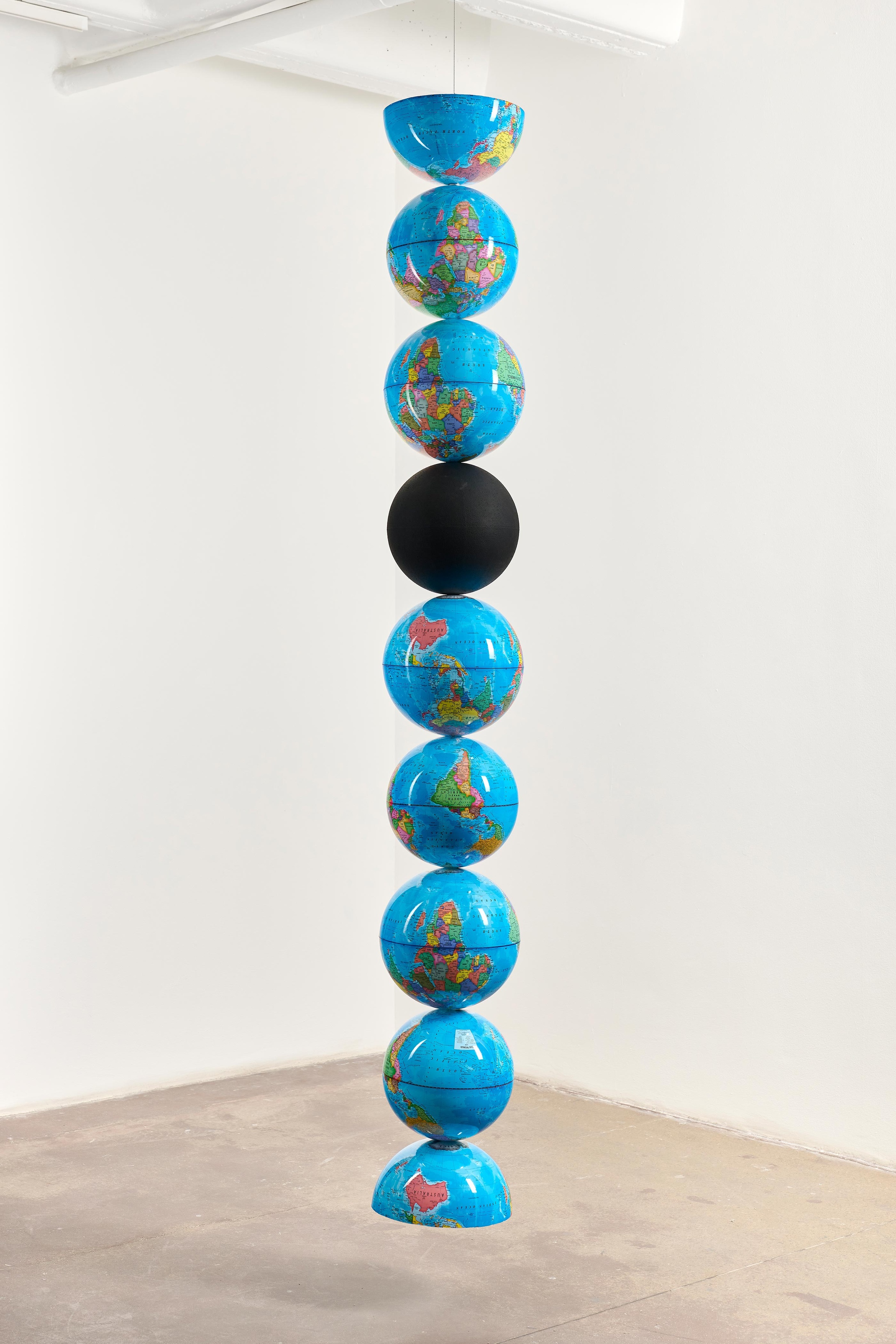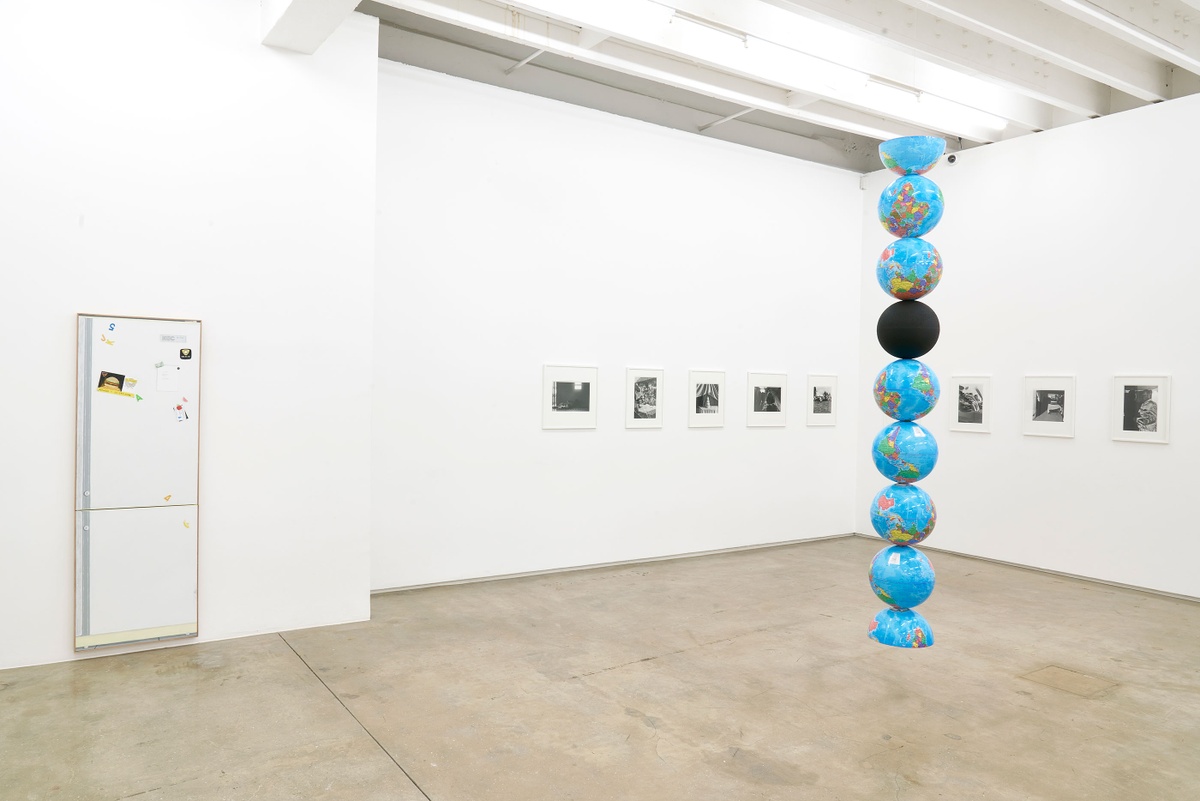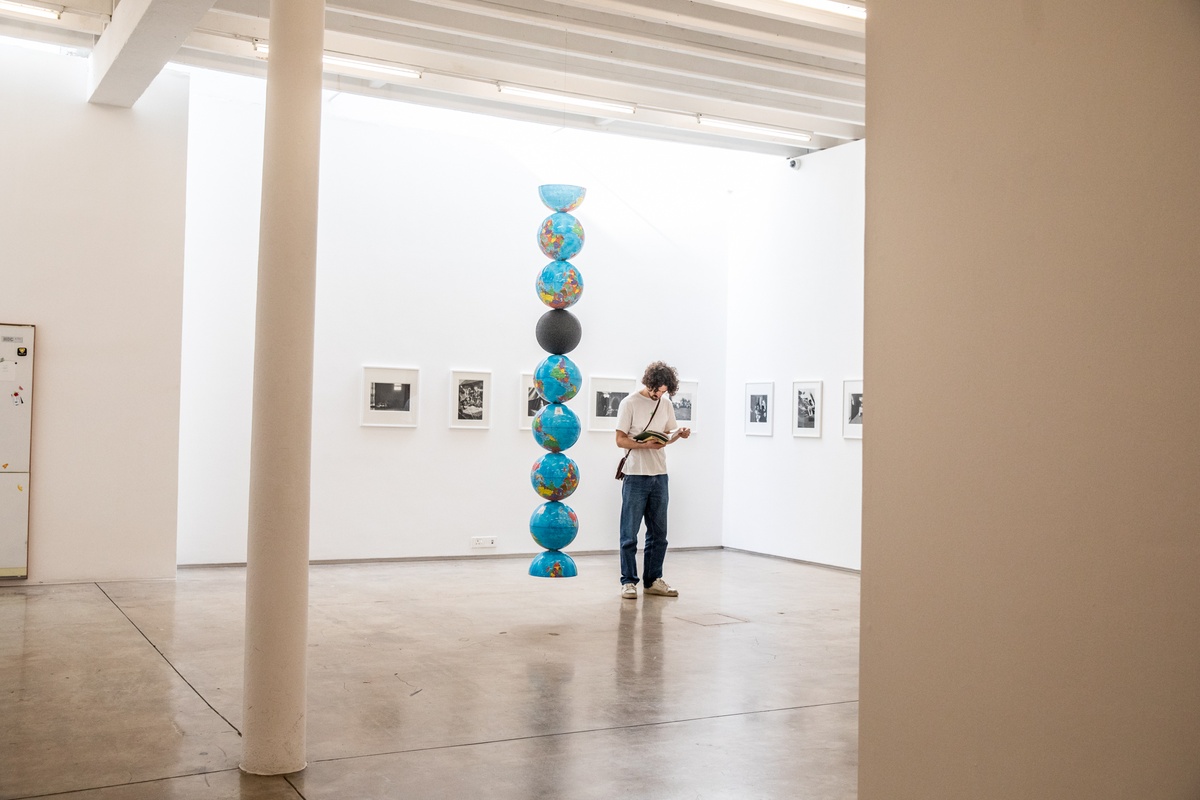Nolan Oswald Dennis

Dennis' model for an endless column extends reflections on two inquiries central to the artist's engagement with conceptual cartography: (1) how can space be imaged, and (2) how can the finite be described? A chain of globes is suspended from the ceiling, the surface of each world identically mapped by colonial powers and histories of violence; by an imposed, Western interpretation of national borders and regional boundaries. Dennis denies the familiarity of this matrix, cutting the earth at its equator and rotating each globe – south above north, the world turned on its head. A matt-black globe at the centre of the column invites new imaginings for what a decolonial future may hold, and the potential for, in the artist’s words, "a black consciousness of space." The work's form and title are reminiscent of Constantin Brancusi's sculpture series, The Endless Column, begun in 1918. However, where Brancusi's columns were intended as a visual illustration of infinity, Dennis' variation on the theme suggests that infinity is an illusion – the earth's resources depleted by imperial entities.
b.1988, Lusaka
Investigating the material and metaphysical conditions of colonialism, Nolan Oswald Dennis explores the interactions between objective and subjective conditions of change. What structures of organisation – whether technological, historical, the known or invisible – maintain or transform these conditions? “What do these structures mean for our work – the work of trying to find, or make, or change the world?” Dennis asks, his drawings and diagrams offering entry points into the cosmologies that he is preoccupied with; his models inviting strategic play. “Reciprocity is the key mechanic of play that I’m interested in,” says Dennis. “The humorous and playful aspect is the part of the work that operates on the surface – this is a cover underneath which a lot more can happen.” South Africa’s democracy is rigged by the structural and systematic remnants of colonialism, and it is through this invitation to play that the audience can begin to engage in potent critique. Dennis’ practice is equal parts experimental and complex – testing reality with the curiosity of the scholar; the precision of an astrophysicist.




